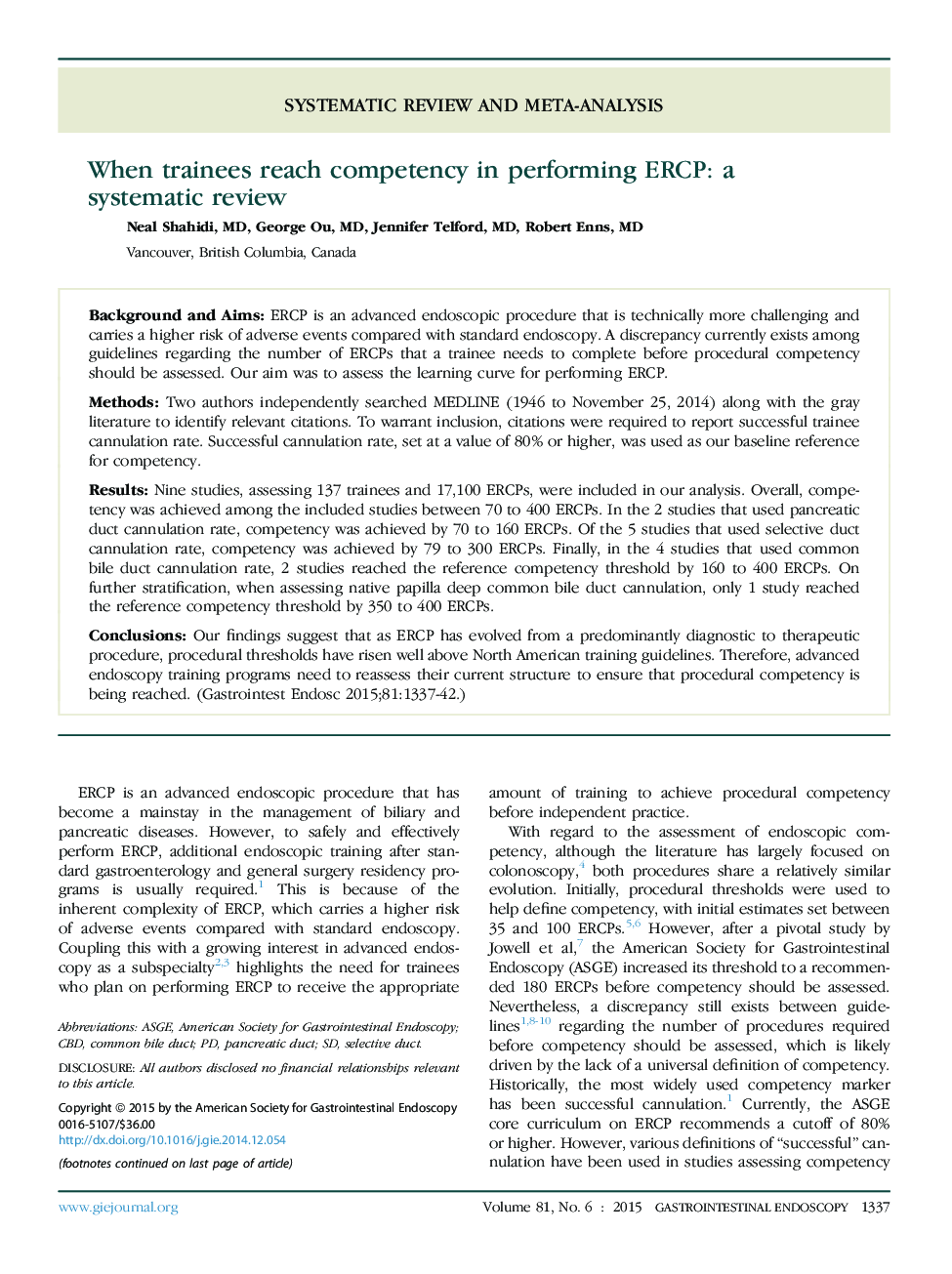| Article ID | Journal | Published Year | Pages | File Type |
|---|---|---|---|---|
| 3302754 | Gastrointestinal Endoscopy | 2015 | 6 Pages |
Background and AimsERCP is an advanced endoscopic procedure that is technically more challenging and carries a higher risk of adverse events compared with standard endoscopy. A discrepancy currently exists among guidelines regarding the number of ERCPs that a trainee needs to complete before procedural competency should be assessed. Our aim was to assess the learning curve for performing ERCP.MethodsTwo authors independently searched MEDLINE (1946 to November 25, 2014) along with the gray literature to identify relevant citations. To warrant inclusion, citations were required to report successful trainee cannulation rate. Successful cannulation rate, set at a value of 80% or higher, was used as our baseline reference for competency.ResultsNine studies, assessing 137 trainees and 17,100 ERCPs, were included in our analysis. Overall, competency was achieved among the included studies between 70 to 400 ERCPs. In the 2 studies that used pancreatic duct cannulation rate, competency was achieved by 70 to 160 ERCPs. Of the 5 studies that used selective duct cannulation rate, competency was achieved by 79 to 300 ERCPs. Finally, in the 4 studies that used common bile duct cannulation rate, 2 studies reached the reference competency threshold by 160 to 400 ERCPs. On further stratification, when assessing native papilla deep common bile duct cannulation, only 1 study reached the reference competency threshold by 350 to 400 ERCPs.ConclusionsOur findings suggest that as ERCP has evolved from a predominantly diagnostic to therapeutic procedure, procedural thresholds have risen well above North American training guidelines. Therefore, advanced endoscopy training programs need to reassess their current structure to ensure that procedural competency is being reached.
